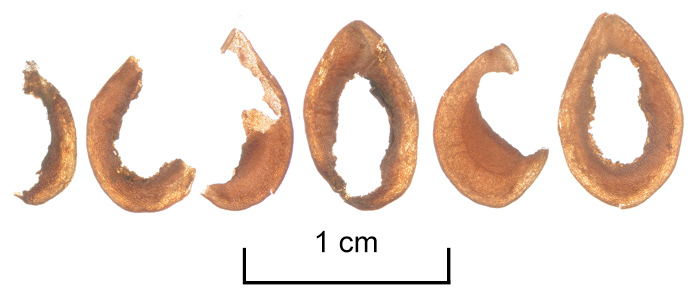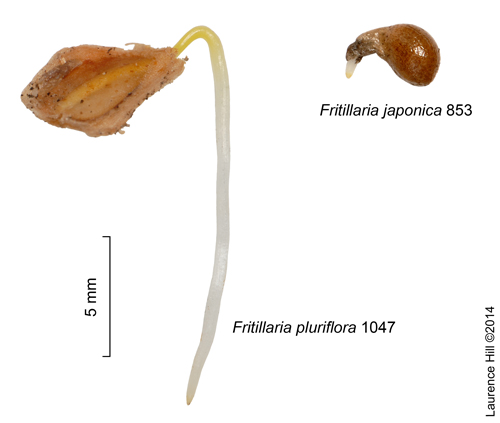SEEDS
Seed Types: Most Fritillaria have flat deltoid shaped seed with a marginal wing to aid wind dispersal. This type of seed is dry at the point of dispersal, tolerant to desiccation and associated with open habitats. In the Fritillaria Japonica Group the seed are ovoid with an elaiosome to encourage dispersal by ants, myrmecochory, and are not tolerant to desiccation. Myrmecochory is found in several Japanese spring ephemerals and is associated with woodland habitats. A systematic investigation of seed morphology of Greek taxa has show taxonomic value in this area of study.

Seedling Recruitment: Within Fritillaria the number of ovules per ovary and flowers per plant varies greatly and consequently the potential seed output ranges from 10-15 seeds in higher altitude Japanese woodland species to 1800 seeds in F. persica.

Actual seedling recruitment has been reported between zero and five percent in wild populations. A combination of factors limit seedling recruitment, for example pollination failure, grazing of flowers, capsules or seed, insect seed predators, soil pathogens or loss of viability with age as the testa (seed coat) is very thin. Competition from other seedlings or surrounding vegetation will cause further seedling mortality.

Dormancy, Germination & Seedling Emergence: One common aspect of all Fritillaria seed is their linear underdeveloped embryo at the time of dispersal so before the seeds can germinate the embryo has to complete its development. Post-dispersal embryo development will only start after imbibition and the rate of embryo growth increases at lower temperatures. The shoot-root axis in Fritillaria is always with the root aprical meristem at the base of the seed and as the embryo develops it expands away from the base. Germination is the point at which the radical emerges and in Japanese woodland species this is timed to correspond with leaf fall and is synchronized with root growth in adult bulbs. In most other Fritillaria species radical emergence starts several months after root growth in adult bulbs. Optimum temperature for post-dispersal embryo development and germination is thought to be 4-5°C. Seedling emergence in all Fritillaria occurs at or just before the emergence of adult bulbs from February to July depending on species.

Laurence Hill ©2020
![]()


